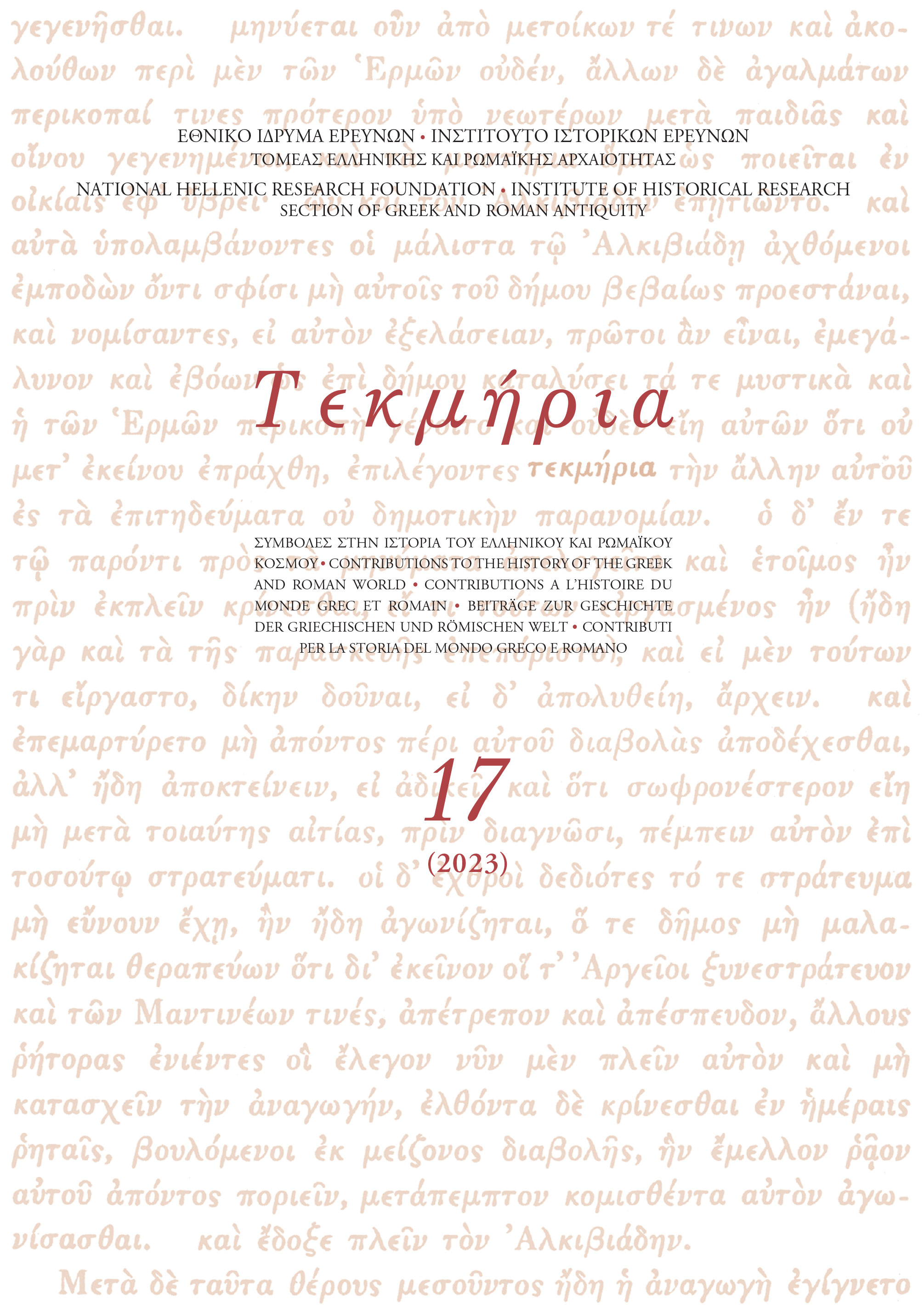The Ozolian Locris in Roman Times: A Lost People in a Fragmented Land
Abstract
Pausanias, arriving at Amphissa shortly after AD 170, met with Aitolian residents -instead of Locrians- who wanted to renounce the Locrian past of the city. These Aitolians, according to him, had refused to move to Patras or Nicopolis, when Augustus divided Aitolia between the two new colonies. Pausanias also visited Myania, Chaleion and Naupactos and mentions that the rest of the Ozolian Locris, except Amphissa, was “under the control” of the Greeks of Patras. The combination of the ancient sources (Pausanias, Strabo, Pliny and the epigraphic record of West Locris) with the archaeological finds from the region provides some information on the status of the Ozolian cities in the Roman period. The new status quo imposed by Rome in Aitolia and in Epictetos Aitolia fragmented the Hesperians and strongly affected the settlement pattern of the region. As far as Amphissa is concerned, an honorary inscription from the sanctuary of Athena Kranaia in Elateia may shed light on the matter of its new Aitolian population.
Article Details
- How to Cite
-
Zachos, G. (2023). The Ozolian Locris in Roman Times: A Lost People in a Fragmented Land. Tekmeria, 17, 233–260. https://doi.org/10.12681/tekmeria.35450
- Issue
- Vol. 17 (2023)
- Section
- Articles

This work is licensed under a Creative Commons Attribution-NonCommercial-ShareAlike 4.0 International License.
Copyright
The copyright for articles in this journal is retained by the author(s), with first publication rights granted to the journal. Authors who submit articles to this journal confirm that third-party intellectual property rights are not violated in any way. By virtue of their appearance in this open access journal, articles can be used freely, with proper attribution, for educational and other non-commercial purposes. The National Hellenic Research Foundation retains the right to publish papers that appear in ΤΕΚΜΗΡΙΑ in any form, including electronic, the journal may assume in the future. It also retains the right to deposit articles published in ΤΕΚΜΗΡΙΑ in its institutional repository.
Sample attribution: Author, article title, first published in ΤΕΚΜΗΡΙΑ, Vol. No., Year, Pages.



